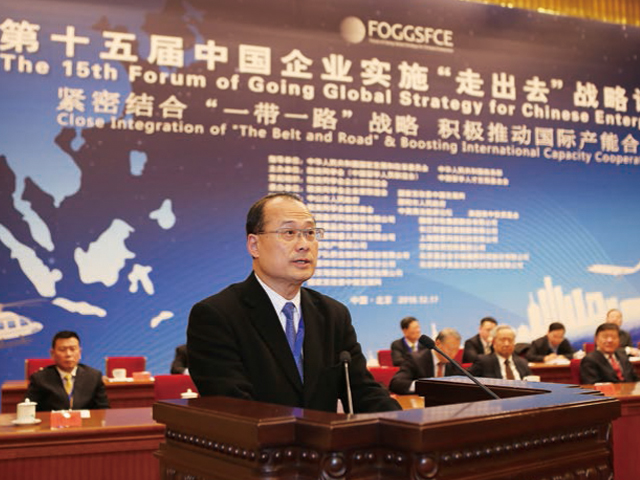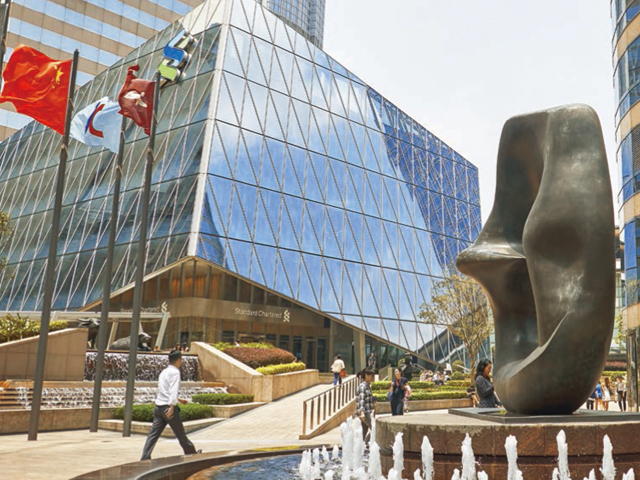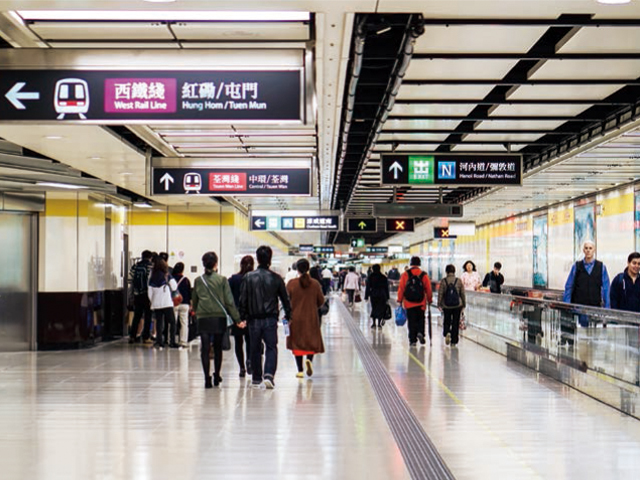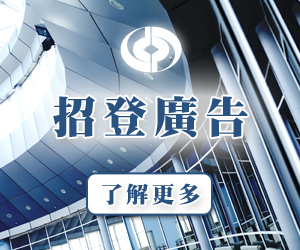As a major node of the “Belt and Road” initiative, Hong Kong can leverage on its advantageous geographical location, open economic system, wide-reaching people network and professional services, as well as its alignment with the global community to exert its important functions and complement the development of the “Belt and Road”.
In response to the national “Belt and Road” strategy, the 15th “Going Out” Strategy Forum for Chinese Enterprises was earlier held at the Great Hall of the People in Beijing. The Chamber’s Chairman Jonathan Choi was invited to present at the forum as a keynote speaker. He gave an in-depth analysis of the unique advantages and functions of Hong Kong under the “Belt and Road” initiative, and shared his insights on how Hong Kong and mainland enterprises can join up in “going out”.
An irreplaceable connector
 Since the “Belt and Road” initiative was proposed, the State has signed a number of cooperative agreements on infrastructure with economies along the Belt. Choi reckons that Hong Kong could capitalize on its role as an international financial center and help make financing arrangements for infrastructure projects along the Belt. He believes that as the “Belt and Road” initiative continues to grow, there will be more transactions and investments using RMB. As the biggest offshore RMB hub, Hong Kong can provide more diversified RMB-denominated financing and complementing monetary services for investment and financial projects along the Belt.
Since the “Belt and Road” initiative was proposed, the State has signed a number of cooperative agreements on infrastructure with economies along the Belt. Choi reckons that Hong Kong could capitalize on its role as an international financial center and help make financing arrangements for infrastructure projects along the Belt. He believes that as the “Belt and Road” initiative continues to grow, there will be more transactions and investments using RMB. As the biggest offshore RMB hub, Hong Kong can provide more diversified RMB-denominated financing and complementing monetary services for investment and financial projects along the Belt.
Choi also pointed out that Hong Kong could offer much more than financial support. Hong Kong’s expertise in the professional services of accounting, legal, construction and project management, for example, is also widely recognized at the international level. Professional support can, therefore, be provided to the “Belt and Road” initiative and help with the Mainland enterprises to “go out”. It can also help project the production capacity of the Mainland to the international markets along the Belt.
He cited Hong Kong’s highly developed railroad system as an example. In addition to providing Hong Kong with railway services, our rail operator has also been taking part in the running or management of railways in the Mainland and overseas. The advanced experience of Hong Kong on transport management does not only drive regional interactions in passenger flow and logistics, but also effectively connects the infrastructure industries of the Mainland and those of the countries along the Belt.
Joining up companies in “Going Out”
 According to Choi, Hong Kong has much more to offer in “the B&R Initiative” on top of exerting its financial and professional service functions. It can also be an investor and an operator, in particular in the ASEAN region. Hong Kong merchants have been investing heavily on ASEAN countries over the years. Choi pointed out that as Hong Kong is a major hub along the 21st Century Maritime Silk Road, trade and investment between ASEAN countries and Hong Kong and the Mainland would become more and more frequent. The role of Hong Kong merchants in the ASEAN will become more evident.
According to Choi, Hong Kong has much more to offer in “the B&R Initiative” on top of exerting its financial and professional service functions. It can also be an investor and an operator, in particular in the ASEAN region. Hong Kong merchants have been investing heavily on ASEAN countries over the years. Choi pointed out that as Hong Kong is a major hub along the 21st Century Maritime Silk Road, trade and investment between ASEAN countries and Hong Kong and the Mainland would become more and more frequent. The role of Hong Kong merchants in the ASEAN will become more evident.
The ASEAN Economic Community established at the end of 2015 would further drive the unified growth of its 10 member countries. The new variable in the Trans-Pacific Partnership (TPP) created by the newly elected US president, for instance, might bring positive impact to the Regional Comprehensive Economic Partnership (RCEP) and the Free Trade Area of the Asia-Pacific (FTAAP) headed by China. These frameworks that promote liberalization in trade investment will provide ample opportunities for deepened cooperation amongst Hong Kong, Mainland and ASEAN companies.
Choi also pointed out that while Hong Kong companies have a superb network in the ASEAN region, they are mainly SMEs. By contrast, Mainland enterprises are more sizeable with higher production capacities. If they could be supported by the strengths of Hong Kong companies in areas such as product R&D, marketing, and distribution channel development, the joint efforts will be able to realize the “going out” together, seeking bigger business opportunities in the ASEAN.
Building a “cross-border e-commerce hub”
Choi anticipates that as countries along the “Belt and Road” will experience more frequent trade and commercial interactions, the middle class in the region will also grow stronger and online consumption will gain bigger popularity. He hopes that Hong Kong, Mainland and Southeast Asian enterprises can strengthen their cooperation in e-commerce and team up to expand the Southeast Asian e-commerce market.
Choi had proposed to the Central Government, that by incorporating the goal of supporting the establishment of a “cross-border e-commerce hub” in Hong Kong in the State’s plan, an upgrade in the logistics industries in the Mainland and Hong Kong would become possible. This would further promote closer collaboration in the industrial development in countries along the “Belt and Road”.
Constructing the Guangdong-Hong Kong-Macau Big Bay Area
 As China’s “southern gateway” to the world, Hong Kong is a major node along the maritime Silk Road. Choi stressed that to put Hong Kong’s function and geographical advantage into full play, strengthening our collaboration with nearby Guangdong and Macau is particularly important. As such, he is an advocate for the establishment of the Guangdong-Hong Kong-Macau Big Bay Area.
As China’s “southern gateway” to the world, Hong Kong is a major node along the maritime Silk Road. Choi stressed that to put Hong Kong’s function and geographical advantage into full play, strengthening our collaboration with nearby Guangdong and Macau is particularly important. As such, he is an advocate for the establishment of the Guangdong-Hong Kong-Macau Big Bay Area.
Choi said that he has been supporting strengthened collaboration amongst Guangdong, Hong Kong and Macau as this is the only way to bring out the best of the three locations in the growth of the “Belt and Road” initiative. In the CPPCC proposal he put forward in last year, he suggested accelerating the construction of the Guangdong-Hong Kong-Macau Big Bay Area by defining and allocating the functions and positions of the three locations. For example, Guangdong will be responsible for developing high-end industries; Hong Kong will be providing professional services; and Macau will focus on developing specialty business tourism. The whole bay area would unite Guangzhou, Qianhai, Nansha, Hengqin, Hong Kong and Macau. Through the setup of the “Belt and Road” initiative, the big bay area could more effectively work with Mainland enterprises in “going out”.
Choi reckoned that the economic and trade potential of the Guangdong-Hong Kong-Macau Big Bay Area would compare to that of Tokyo Bay in Japan, the New York Metropolitan Area and the San Francisco Bay Area in the US. It would also consolidate cooperation amongst enterprises in the three locations through the construction of the Guangdong Free Trade Zone and lift the level of participation of various industries in the “Belt and Road” initiative. In the long run, the big bay area would be further aligned with the ASEAN region.
Choi reiterated that Hong Kong shall leverage on its advantages with China as our hinterland and our strengths made possible by “One Country, Two Systems”. Supplemented by the solid strength of the State in the scopes of infrastructure and tangible industries, as well as Hong Kong’s soft power in finance and professional service, Hong Kong can surely put its function in full play of “coming in, going out” during the expansion of the “Belt and Road” initiative. It will be joining up with Mainland enterprises in exploring once-in-a-lifetime business opportunities.




